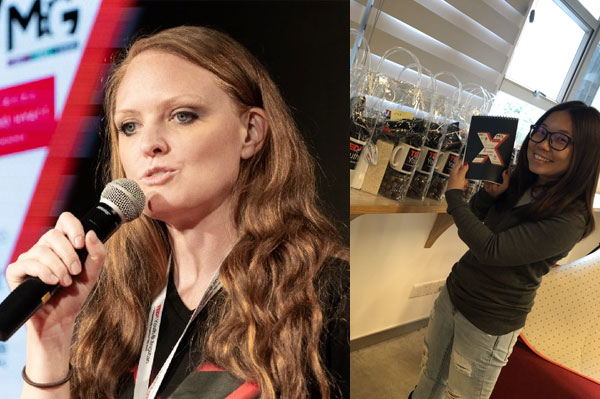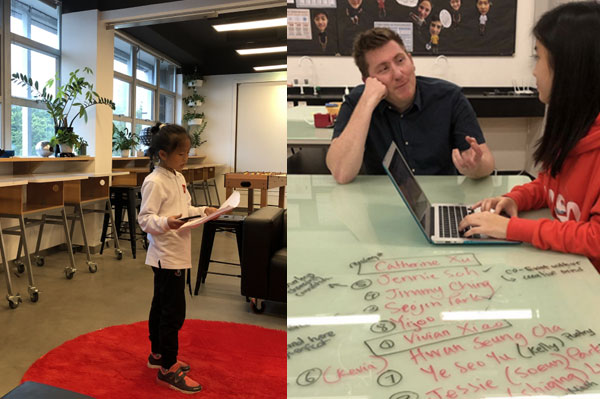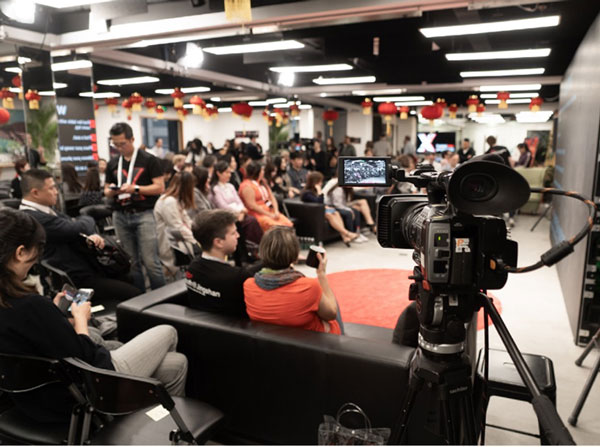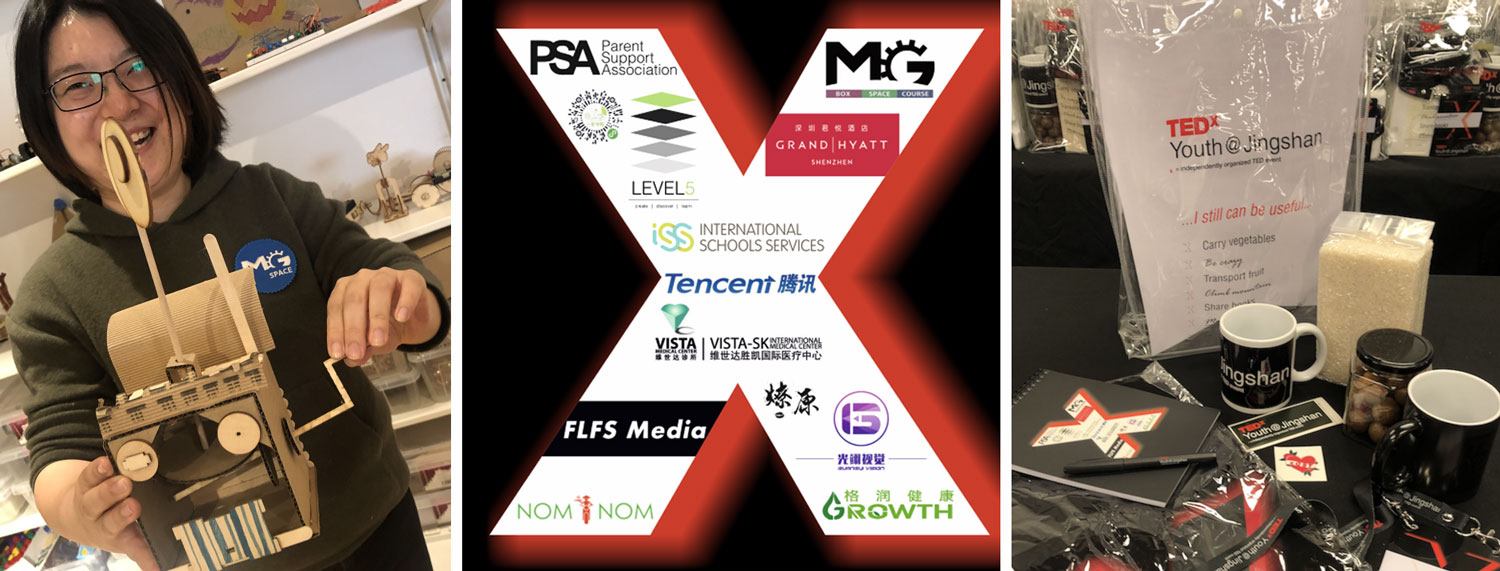TEDx Redux: 12 Tips from the Frontline
In 2009, TED.com created TEDx, a program of local, self-organized events that bring people together to share a TED-like experience. This February 23, ISS proudly sponsored a TEDx event called TEDxYouth@Jingshan, where x = independently organized. LEVEL 5 in-kind donated the venue for the day, which was filled with youth and adult speakers, innovative breakout sessions, thought-provoking videos, and more designed to inspire and inform.
We’re still applauding the many students, teachers, volunteers, and wider Shenzhen community members that made this day possible. Special thanks to Tosca Killoran, Director of LEVEL 5 Shenzhen, TEDx Organizer, for her initiative and hard work bringing the event together! The following article (adapted from Tosca’s original post on Medium) gives an inside look at the recent event and offers tips for carrying through your own TEDx event. Visit the TEDx-YouthJingshan website for more information about upcoming events, links to videos, photos, and to meet the team.
In 2011, I organized my first TEDxYouth event. Since then, I have founded three events (TEDxYouth@BIS, TEDxYouth@NIST, and TEDxYouth@Jingshan). From my successes and failures, I have learned enough to give some tips to schools who want to start an event within their communities. In 2012, I wrote two books specifically for organizing TEDx events. One comes with a free website full of resources. A link is provided at the end of this post.
TED stands for Technology, Entertainment, and Design. It began as a small conference in California but has grown to be a worldwide community, many millions strong, focused on exchanging and spreading ideas. The people at TED understand that if people are inspired by a TED speaker’s ideas, and if that sparks an action — all those little sparks will create a roaring fire of change. TED is made up of events that people attend in order to watch people talk or perform. Those talks and performances are taped and put on the TED website for everyone around the world to view. TEDx talks are a little bit different; they are local, in your city or town, and are organized by people just like you. TEDx organizers want to find people with clever, interesting ideas and give them a place to share those ideas with people who can help them turn the ideas into reality. They want people to hear what you have to say, what your thoughts and ideas are, and how you can engage other people around the world. Think! If you could inspire just one person to make a change in the world, what impact could that have?

1. Create a Team
Part of organizing a successful event is the people you will choose to be part of your team. Although the event is managed by many smaller mini-teams, in the end, it all coalesces into this amazing production. Being able to compartmentalize the organization of your event leaves you free to oversee the event as a whole. Some schools will take growing the event in the first year and having a small team. You are going to do a lot as an organizer! This year we had a small core team of six that took care of everything from signage to speakers.
When working with youth we have found that creating a club is a successful way to up-skill youth in event organization and create sustainability of the event. We recruit teachers, parents or professionals from our learning community to mentor students in such things as accounting, video production, web design, and the like in order to have those students be proficient to teach future students the skills in subsequent events. Inquire! Start getting to know the skills of those around you. Start crowdsourcing by making personal connections with others and asking: “What are your hidden talents?”
2. Speakers
Inviting, mentoring, and coaching presentation literacy for both adults and kids takes time and planning. Consider body language, tech capacity, memorization of talks and more! In your school, you will need volunteers to run a club or after school activity so you have the time to devote to this process. Myself and three teachers volunteered their time to help organize TEDx workshop sessions with the students. We met twice a week for over six months in order to nail their talks. As it was our first year, and TEDx was largely unknown within the community, we put out a call to primary teachers asking them to suggest a few students from every grade level that they thought would love the TEDx experience. Those students then were coached by Dave Sheppard and Alice Cheung twice a week on volunteer time. For the older students, we offered an after school workshop in which Peter Hennigar supported on Mondays and I supported on Wednesdays. Later, students met with mentors to get another perspective on their talks.
In those sessions, having real conversations about ideas was what mattered most. Giving critical feedback and curating a line up that is fresh, confident and creative is key. Adult speakers need critical feedback too. I use Google docs to share ideas, comments, and edits. I try to meet with adult speakers at least three times face to face before the event.

3. Rehearsals
4. Slide Decks

TEDx has specific rules about decks, ensure your speakers know the rules! This year our speakers blew us away by illustrating many of their own slides. Slides can be complex or incredibly simple. Ensure they match the talk, and remember less is often more. I create a pdf for students and adult speakers that outlines the theme, expectations, calendar, and waivers, and provide it very early on in the process.
5. Venue

6. Photos
7. Manage Multimedia
It is important to remember that part of the beauty of TEDx is that you are creating a sustainable event that is not only shared once but also archived in video and shared with the entire globe. For that reason, you must record all original stage content, such as live talks and performances on video. After your event, you must make this video accessible to TED and the public.
Getting the technical details of your event set in advance will save time, give speakers confidence in their presentations, and make the event run smoothly. However, no matter how prepared you are, something always goes wrong! For that reason have a plan A, plan B AND a plan C. Be able to roll with the errors. This year our audio cues kept being missed. It was a lost in translation moment. No worries, we would just invite speakers to the stage to redo that short clip. That is the magic of editing. Capture, capture, capture.

8. Breakouts
9. Catering
10. Promote your event
Social media is not a ‘new’ way of conversing with the world anymore; it is part of being a 21st-century citizen. So get out there! Facebook, Twitter, blogs, and your personal event website are all available to pump your event and connect you with others around the world that are talking about TEDx. It is important to remember to keep your tweets and posts focused on your event, the speakers, and the hype up to the event. You will need posters, Wechat messages, Instagram posts, Tweets, Facebook and more! Use those amazing photos taken by the photographer to your advantage. Be sure to credit the photographers in all marketing posts.
11. Meet with Sponsors

Really the most amazing support you can receive is in the form of in-kind donations of time, expertise and services. Gift bags are a big part of the TED experience — they’re actually kind of famous. At a TEDx event, you aren’t required to give a gift bag, but it’s always a fun addition. Attendees feel great if they’ve received something made just for them or items that have some relevance with the speakers. Sponsors can also contribute to gift bags.
12. Talks
· The tech demo: An onstage look at some clever new invention that the speaker was a part of creating.
· The performance: Music, dance, magic, puppetry, or some other performance to captivate your audience.
· The artist’s statement: In these talks, artists showcase their art and explain the meaning and process behind what they create.
· The “dazzle with wonder” These talks are mainly about the amazement of science and discovery.
· The small idea: These talks are not about one big, world-changing idea, but instead a very engaging take on an interesting topic.
· The “issue” talk: These talks expose your audience to an issue that they may not otherwise know much about.

13. Say Thank You
Most of what organizers do relies on the kindness of volunteers. Events simply could not run without an army of people that work long hours, dedicate their time, knowledge, skills and abilities to the team and event. Acknowledgment and giving credit where credit is due is an important and invaluable skill in all walks of life, but especially when it comes to event planning. Buying a bottle of wine for 100 people who have helped out quickly adds up, but have no fear! Saying thank you can get creative, funny, touching or memorable, and free using online technology and tools. And don’t forget, that after all the technology, there is still power in a simple handwritten note.
Ponder! What is your place within the community you have created? Don’t forget to thank yourself too. You deserve it.

So, imagine a day filled with brilliant speakers, thought-provoking video and mind-blowing conversation. By organizing a TEDx event, you can create a unique gathering in your community that will unleash new ideas, inspire and inform.
Inspired? For a comprehensive guide through the journey of organizing your own TEDx event, download Tosca Killoran and Jeff Hoffart’s book and access the complimentary website. For full TED rules and to apply for a license, visit TED.com
